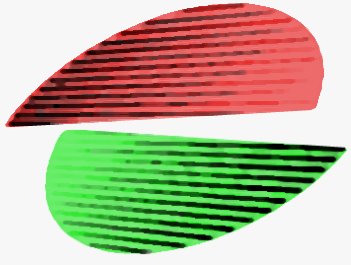Accredited InvestorsAltcoinAnatoli UnitskyAnti-Money Laundering (AML) In CryptoAPIArbitrageArtCoin TokenArticle DirectoryASICAuction Terminology GlossaryBasics of Stock Market InvestingBear MarketBest Crypto Payment Provider In the WorldBitcoinBlockchainBlockchain ConfirmationBlockchain Consensus MechanismBlockchain ForkBlockchain GlossaryBored Ape Yacht ClubBuild a Business That OutperformsBull MarketBuying SkyWay SharesByzantine Fault Tolerance (BFT) ExplainedCasascius CoinCentral Bank Digital Currency (CBDC)Centralized Crypto ExchangeCoinCoinsetCold WalletCollateralCommodity Futures Trading Commission (CFTC)Cross-Chain TechnologyCRUCrypto ExchangeCrypto GlossaryCrypto JokesCrypto Terms to KnowCrypto TickerCryptocurrencyCryptographyCryptojackingCryptounit BlockchainCryptounit GlossaryCryptounit ProgramdApp (Decentralized Application)Dead CoinDecentralized Exchange (DEX)Decentralized Finance (DeFi)Difference Between Bitcoin and EthereumDifferent Ways of Investing MoneyDigital CurrencyDistributed LedgerDo Your Own Research (DYOR)Dollar Cost Averaging (DCA)Dow Jones Industrial Average (DJIA)EncryptionERC-20ERC-721EthereumEvoScentFear Of Missing Out (FOMO)Fear, Uncertainty and Doubt (FUD)Fiat MoneyFNT Fintech CompanyGenesis BlockGlobal Unit PayGlossary of Banking TermsGlossary of Business TermsGlossary of Financial TermsHalvingHODLHot WalletHow Do I Start InvestingHow Rich is Satoshi Nakamoto?How to Create a BlockchainHow to Find Private InvestorsHow to Get Into FintechHow to Program Smart ContractsI Am Thrilled to Be a Part of This Global ProjectInitial Coin Offering (ICO)Initial Public Offering (IPO)Initial Token Offering (ITO)Innovation Basalt TechnologyInnovative Transportation TechnologiesInternational Bank Account Number (IBAN)Investing in Gold Mining StocksInvesting in Gold MiningJagerJoy of Missing Out (JOMO)Know Your Customer (KYC)LedgerLiquidity in CryptocurrencyMaker and Taker Fees in Crypto TradingMarket Capitalization (Market Cap)Meme CoinMetal Credit CardMetaMaskMillenials Now Have Access to Generational WealthMy Best Investment EverNew Digital EvolutionNFT GlossaryOff-Chain TransactionsOn-Chain TransactionsOpen Edition NFTPeer-to-Peer (P2P)Personal Loan GlossaryProbably the Best STO on the MarketProof of Stake (PoS)Real Estate Glossary of TermsReal Estate Investing GlossaryRebase TokenSecurities and Exchange Commission (SEC)Security Token ExchangesSecurity Token Offering (STO)Soulbound Decentralized Identities for Security TokensSoulbound ID Launch by Stobox Proves a SuccessSoulbound TokensStoboxStock Market GlossaryTestimonialsTether Platform and Token (USDT)UnitEx ExchangeUnitsky String TechnologiesUNTBUSDUValidatorWe Started Investing When We Were 25What are Blue Chip NFT?What are Blue Chip Stocks?What are Crypto Assets?What are Crypto Smart Contracts?What are CryptoPunks NFT?What are Digital Assets?What are Digital Collectibles?What are Gas Fees?What are Gas Wars?What are Hashmasks?What are Non Fungible Tokens?What are Non-Sufficient Funds (NSF)?What are Soulbound Tokens (SBT)?What are Stablecoins in Crypto?What are Transactions Per Second (TPS)?What are Utility NFTs?What are Utility Tokens?What Does Burning Crypto Mean?What Does Diamond Hands Mean?What Does Paper Hands Mean?What Does To The Moon Mean?What Does WAGMI Mean?What Happened to Satoshi Nakamoto?What is a 51% Attack?What is a Baby Boomer?What is a Backlink?What is a Banner?What is a Barcode?What is a Bid-Ask Spread in Crypto?What is a Block in Blockchain?What is a Block Reward?What is a Blockchain Address?What is a Blockchain Node?What is a Blockchain Oracle?What is a Blog?What is a Bond?What is a Bot?What is a Broker?What is a Business Accelerator?What is a Cash Cow?What is a Commercial Bank?What is a Commodity?What is a Con?What is a Credit?What is a Credit Limit?What is a Credit Rating?What is a Crypto Airdrop?What is a Crypto Bridge?What is a Crypto Scam?What is a Crypto Token?What is a Crypto Wallet?What is a Crypto Whale?What is a Crypto Winter?What is a Cryptocurrency Public Ledger?What is a Cryptocurrency Roadmap?What is a DAO?What is a Dark Pool?What is a Day Trader?What is a Dead Cat Bounce?What is a Default?What is a Derivative?What is a Digital Credit Card?What is a Fiscal Quarter?What is a Fungible Token?What is a Governance Token?What is a Grace Period?What is a Hard Fork?What is a Hot Wallet?What is a Hybrid Blockchain?What is a Hybrid PoW/PoS?What is a Joint Account?What is a Market Cap?What is a Merkle Tree in Blockchain?What is a Mining Farm?What is a Nonce? What is a PFP NFT?What is a POS System?What is a Prepaid Card?What is a Private Blockchain?What is a Private Key?What is a Public Blockchain?What is a Public Key?What is a Reserve Currency?What is a Ring Signature?What is a Routing Number?What is a Rug Pull in Crypto?What is a Safe Deposit Box?What is a Satoshi?What is a Security Token?What is a Seed Phrase?What is a Shitcoin?What is a Sidechain?What is a Soft Fork?What is a Spot Market?What is a State Bank?What is a SWIFT Code?What is a Tax Identification Number (TIN)?What is a Time Deposit?What is a Transaction Account?What is a Variable Interest Rate?What is a Virtual Assistant (VA)?What is a Virtual Card?What is a Virtual Currency?What is a Visa Card?What is a Whitelist in Crypto?What is a Whitepaper?What is Accounts Payable (AP)?What is AMA in Crypto?What is Amortization?What is an Accrual?What is an ACH Transfer?What is an Actuary?What is an Addendum?What is an Algorithm?What is an Angel Investor?What is an Annuity?What is an Asset?What is an ATM?What is an Atomic Swap?What is an Audit?What is an Avatar?What is an EIN?What is an Embargo?What is an Entrepreneur?What is an IDO (Initial Dex Offering)?What is an Interest Rate?What is an Internet cookie?What is an Investment Bank?What is an NFT Drop?What is an NFT Floor Price?What is an Ommer Block?What is an Orphan Block?What is an Outstanding Check?What is an Overdraft?What is Artificial Intelligence (AI)?What is B2B (Business-to-Business)?What is B2G (Business-to-Government)?What is Bartering?What is Bitcoin Dominance?What is Bitcoin Pizza Day?What is Blockchain Immutability?What is Blockchain Used For?What is BRICS?What is Business-to-Consumer (B2C)?What is C2C (Customer to Customer)?What is Capitalism?What is Catfishing?What is CFD Trading?What is Check Kiting?What is Cloud Mining?What is Communism?What is Content Marketing?What is Decentralization in Blockchain?What is DeFi in Crypto?What is Delisting?What is Depreciation?What is Digital Marketing?What is Diversification?What is Double Spending?What is Dumb Money?What is Dumping?What is Earnings Per Share (EPS)?What is Economics?What is Email Marketing?What is Equity?What is Etherscan?What is Fintech?What is Foreign currency?What is Forex?What is Fundamental Analysis (FA)?What is GameFi?What is Generative Art NFT?What is Gwei?What is Hard Currency?What is Hash Rate?What is Hashing in Blockchain?What is Inflation?What is Initial Game Offering (IGO)?What is Interest?What is Interest Income?What is Mainnet?What is Mastercard?What is Metaverse in Crypto?What is Mining in Cryptocurrency?What is Minting NFT?What is Mobile Banking?What is Money Laundering?What is NFT Alpha?What is NFT Metadata?What is NFT Rarity?What is NGMI Meaning?What is Nominal Interest Rate?What is Online Banking?What is Open-End Credit?What is OpenSea NFT Marketplace?What is Personal Identification Number (PIN)?What is Play-to-Earn?What is Polygon?What is Proof of Authority (PoA)?What is Proof of Work (PoW)?What is Public Key Cryptography?What is Pump and Dump?What is Quantum Computing?What is Refinancing?What is Retail Banking?What is Ripple?What is Sharding?What is Slippage in Crypto?What is Smart Money?What is Solvency?What is Soulbound ID?What is SSL?What is Staking in Cryptocurrency?What is Technical Analysis (TA)?What is Testnet?What is the Ask Price?What is the Better Business Bureau (BBB)?What is the Bid Price?What is the Dark Web?What is the InterPlanetary File System (IPFS)?What is the Gold Standard?What is the Lightning Network?What is the Prime Rate?What is the Sandbox?What is the Secondary Market?What is the World Bank?What is Tier 1 Capital?What is Tokenomics?What is TRC-20?What is Universal Banking?What is Unspent Transaction Output (UTXO)?What is Usury?What is Volatility in Crypto?What is Wash Trading?What is Web3?What is Whisper?What is XRP?What is Zero-Knowledge Proof (ZKP)?Who is Beeple?Who is Satoshi Nakamoto?Who is Vitalik Buterin?Why Tokenization is a Safe HavenWhy You Should Try Your Hand at Trading
What is a Bid-Ask Spread in Crypto?
- Home
- Crypto Glossary
- What is a Bid-Ask Spread in Crypto?
When you engage in buying and selling assets on a crypto exchange, the prevailing market prices are determined by the forces of supply and demand.

In addition to the price, it is crucial to consider other essential factors such as trading volume, market liquidity, and order types. However, it is important to note that depending on the prevailing market conditions and the type of orders used, you may not always obtain the desired price for a trade.
The process of buying and selling assets on a crypto exchange involves a continuous bargaining between buyers and sellers, which results in a spread between the bid and ask sides (bid-ask spread). Depending on the volatility of the asset being traded and the amount involved, you may also encounter slippage. Therefore, having a basic understanding of the order book of an exchange is vital to avoid any unexpected outcomes.
What is a Bid-Ask Spread in Crypto?
In simple terms, the bid-ask spread refers to the difference between the highest price that a buyer is willing to pay for a certain digital asset and the lowest price that a seller is willing to sell it for. This difference in price is what makes up the bid-ask spread.
Assume that the current market price of a particular asset is $100. A buyer is willing to buy the asset for $95, and a seller is willing to sell it for $105. In this situation, the bid-ask spread is $10, which is the difference between the highest bid and the lowest ask price.
The bid-ask spread can be seen as the transactional cost involved in buying or selling an asset in the crypto market. The wider the bid-ask spread, the more costly it is to buy or sell a particular digital asset.
Crypto exchanges, which act as intermediaries between buyers and sellers, make their profit by taking a commission on each transaction. This commission is usually taken as a percentage of the bid-ask spread.
The bid-ask spread can vary depending on a number of factors, such as the liquidity of the asset, the trading volume, and market volatility. Highly liquid assets such as Bitcoin and Ethereum usually have a lower bid-ask spread as there are more buyers and sellers, resulting in a more efficient market.
It's important to note that the bid-ask spread can change rapidly in response to market conditions. During periods of high volatility, the bid-ask spread can widen as buyers and sellers adjust their prices to the rapidly changing market conditions.
Market Makers and Bid-Ask Spread in Crypto
Market makers play a critical role in ensuring that there is enough liquidity in the market. In crypto markets, market makers are usually crypto exchanges, but they can also be specialized firms that focus solely on market making activities.
The primary role of market makers is to provide liquidity and create a market for trading cryptocurrencies. Market makers achieve this by providing two-way quotes for an asset at all times, thereby allowing buyers and sellers to execute trades without delay. They earn profits by buying at the bid price and selling at the ask price, pocketing the difference as their commission. The wider the bid-ask spread, the greater the potential profit for market makers.
However, market makers also take on significant risks, as they are exposed to potential losses if market conditions change rapidly. For instance, if a market maker buys a large volume of an asset at a low price and the market price suddenly drops, the market maker could be left holding a significant amount of assets worth less than what they paid for them.
Market makers can use a variety of strategies to mitigate these risks, including setting limit orders and hedging their positions. They can also adjust their bid and ask prices to reflect changes in market conditions and trading volume, thereby ensuring that there is always enough liquidity to facilitate trades.
Possible Market Maker Manipulation
Market makers play an important role in maintaining liquidity and narrowing bid-ask spreads in the cryptocurrency market. However, in some cases, market makers can manipulate bid-ask spreads to their advantage, potentially cheating traders.
One way market makers can cheat with bid-ask spreads is through quote stuffing. This involves placing a high volume of orders with the intention of creating an illusion of high demand or supply. This can trick traders into making decisions based on false market conditions, allowing market makers to profit from the spread.
Another method used by market makers is spoofing, which involves placing fake buy or sell orders in the order book to manipulate the market. By placing large orders that they have no intention of filling, market makers can create a false sense of demand or supply, which can cause traders to buy or sell at less favorable prices.
Finally, market makers can also engage in front-running, which involves using non-public information to make trades ahead of other traders. By doing so, market makers can manipulate prices and bid-ask spreads to their advantage, making profits at the expense of other traders.
It is worth noting that such manipulations are illegal and can result in severe penalties for the market makers. As such, reputable exchanges take measures to prevent such activities and ensure a fair trading environment for all market participants.
Slippage and Bid-Ask Spread in Crypto Trading
Slippage is a term used to describe the difference between the expected price of an asset and the actual price at which it is traded. It can occur due to a variety of factors, including market volatility, trading volume, and the bid-ask spread.
When a trader places a market order to buy or sell an asset, they will usually receive the best available price at the time the order is executed. However, if the bid-ask spread is wide, the trader may end up paying a higher price when buying or receiving a lower price when selling than they had anticipated.
This difference between the expected and actual price is known as slippage. Slippage can occur in both bullish and bearish market conditions and is especially prevalent in highly volatile markets, such as the cryptocurrency market.
Traders can mitigate the risk of slippage by using limit orders instead of market orders. A limit order is an order to buy or sell an asset at a specific price or better. By setting a limit order, traders can ensure that they are only buying or selling an asset at the price they are willing to pay or receive, respectively.
It is important to note that slippage can also occur due to market conditions that are beyond a trader's control. For instance, if there is a sudden surge in trading volume, it can result in a shortage of available liquidity, causing the price to move rapidly and unexpectedly. In such cases, even limit orders may not be able to protect traders from experiencing slippage.
However, slippage does not always lead to a worse-than-expected price outcome. In fact, positive slippage can occur when the price of an asset decreases during a buy order or increases during a sell order. While positive slippage is not common, it may happen in highly volatile markets.
Bid-Ask Spread Percentage
The bid-ask spread percentage is a common measure of liquidity in the financial markets, including the crypto market. It is calculated by dividing the difference between the highest bid and the lowest ask price by the mid-price (the average of the highest bid and lowest ask prices) and multiplying the result by 100. The resulting percentage indicates the percentage difference between the bid and ask prices.
The wider the bid-ask spread percentage, the less liquid the market is considered to be, as there are fewer market participants willing to buy or sell at the current price. Conversely, a narrow bid-ask spread percentage indicates a more liquid market, with more buyers and sellers actively trading at or near the current price.
Therefore, understanding the bid-ask spread percentage is crucial for traders and investors to assess the market's liquidity and make informed trading decisions.
Related Articles

What is the Bid Price?
It is worth noting that the bid price is just one part of the bid-ask spread, which is the difference between the highest price that a buyer is willing to pay for a cryptocurrency and the...

What is the Ask Price?
On the other hand, a wide bid-ask spread can indicate a market that is experiencing low liquidity or high volatility. A wide spread means that buyers and sellers are not in agreement on...

What is Volatility in Crypto?
Secondly, the presence of whales, individuals or groups that hold a large amount of a particular cryptocurrency, can cause market volatility. When whales hold their...

Liquidity in Cryptocurrency
The difference between the highest bid (selling) price and the lowest ask (purchasing) price in the order book is known as the bid-ask spread. The narrower the spread, the more...
- Home
- Crypto Glossary
- What is a Bid-Ask Spread in Crypto?